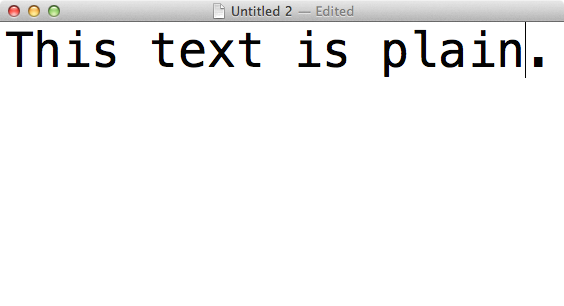

Related: How To Write a Sales Email That Will Get Responses Advantages of plain text Because you can include images and links, a typical business HTML email might include the following in its design:ĭirect link to the product purchasing page You can design these emails to match your brand's aesthetic. HTML emails often resemble web pages since they can include most of the features a webpage has. If your email design includes highlighting a specific line of text, like a slogan or call to action, you can make it its own paragraph to convey its importance to readers.

However, you can use plain text to create paragraphs. Because it doesn't support text formatting, the email design can't include any bold, italics or underlines. Plain text allows for simple blocks of text. Most popular email clients include at least some HTML support, but the experience can differ from one client to the next. Because of this, the recipient's email experience depends on the client they use to read it. Not all email clients universally support HTML. Plain text can help you avoid formatting issues. This means that when you create an email in plain text, the recipient receives the email as you intended it to look. Since plain text is the original standard for email, all email clients can read, understand and interpret it. Businesses use these emails to engage customers and potentially convert email reads into clicks or sales. HTML can include images, links and text formatting. Common uses for plain text emails include:Ĭustomer service messages and conversations A plain text email can eliminate any visual clutter and offers a simple design with fewer formatting errors. This makes plain text well suited for personal emails and straightforward conversations. The primary use of plain text emails is conveying information efficiently with no distractions. Some key differences between plain text and HTML in emails include: Common uses Since plain text ASCII and HTML offer different capabilities, there are many differences between the two in practice. Related: How To Create an HTML Email (With Tips) Plain text versus HTML emails Organizations and marketing professionals may use HTML emails for more effective messaging and sales. HTML is a more recent feature for email than ASCII, but it has grown in popularity, and most modern email clients support the format. HTML stands for Hypertext Markup Language, a coded language that allows for images, colors, formatting and even multimedia within an email. Related: Q&A: What Is Email Marketing? What is HTML?
HTML AND PLAIN TEXT EDITOR CODE
Plain text emails use a universal text code called the American Standard Code for Information Interchange (ASCII). Plain text is a type of email that contains only text. It doesn't feature special graphics or formatting enhancements. In this article, we define plain text and HTML emails, describe their differences and list some advantages so you can decide which one fits your goals. Understanding the differences between these two types of emails can help you decide which one might be most beneficial to you. Plain text and HTML are two ways of coding emails, and they offer different experiences for recipients. A business might use email to reach customers and alert them about new products or company news during a typical marketing or informational campaign.


 0 kommentar(er)
0 kommentar(er)
